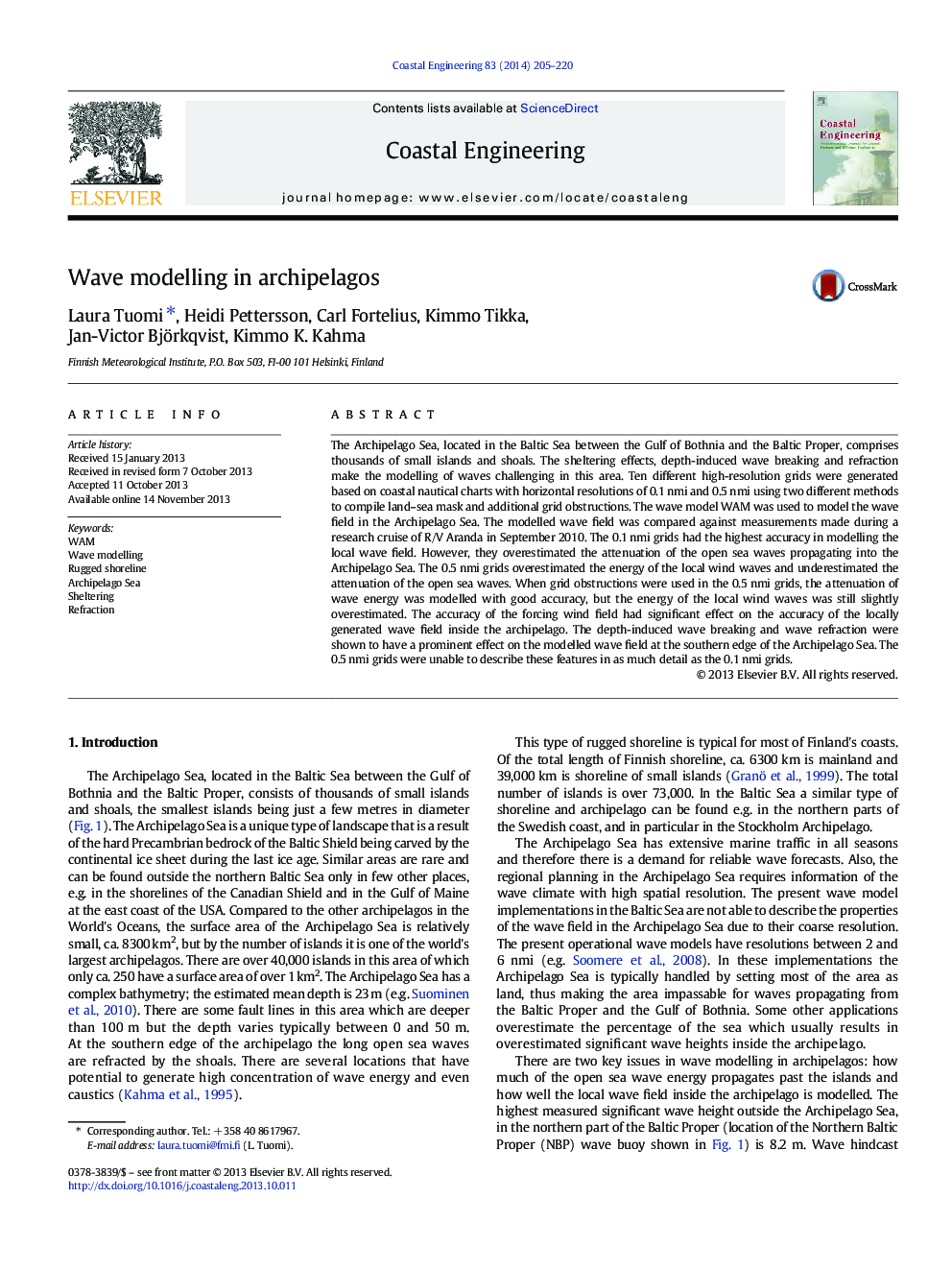| Article ID | Journal | Published Year | Pages | File Type |
|---|---|---|---|---|
| 8059868 | Coastal Engineering | 2014 | 16 Pages |
Abstract
The Archipelago Sea, located in the Baltic Sea between the Gulf of Bothnia and the Baltic Proper, comprises thousands of small islands and shoals. The sheltering effects, depth-induced wave breaking and refraction make the modelling of waves challenging in this area. Ten different high-resolution grids were generated based on coastal nautical charts with horizontal resolutions of 0.1Â nmi and 0.5Â nmi using two different methods to compile land-sea mask and additional grid obstructions. The wave model WAM was used to model the wave field in the Archipelago Sea. The modelled wave field was compared against measurements made during a research cruise of R/V Aranda in September 2010. The 0.1Â nmi grids had the highest accuracy in modelling the local wave field. However, they overestimated the attenuation of the open sea waves propagating into the Archipelago Sea. The 0.5Â nmi grids overestimated the energy of the local wind waves and underestimated the attenuation of the open sea waves. When grid obstructions were used in the 0.5Â nmi grids, the attenuation of wave energy was modelled with good accuracy, but the energy of the local wind waves was still slightly overestimated. The accuracy of the forcing wind field had significant effect on the accuracy of the locally generated wave field inside the archipelago. The depth-induced wave breaking and wave refraction were shown to have a prominent effect on the modelled wave field at the southern edge of the Archipelago Sea. The 0.5Â nmi grids were unable to describe these features in as much detail as the 0.1Â nmi grids.
Related Topics
Physical Sciences and Engineering
Engineering
Ocean Engineering
Authors
Laura Tuomi, Heidi Pettersson, Carl Fortelius, Kimmo Tikka, Jan-Victor Björkqvist, Kimmo K. Kahma,
